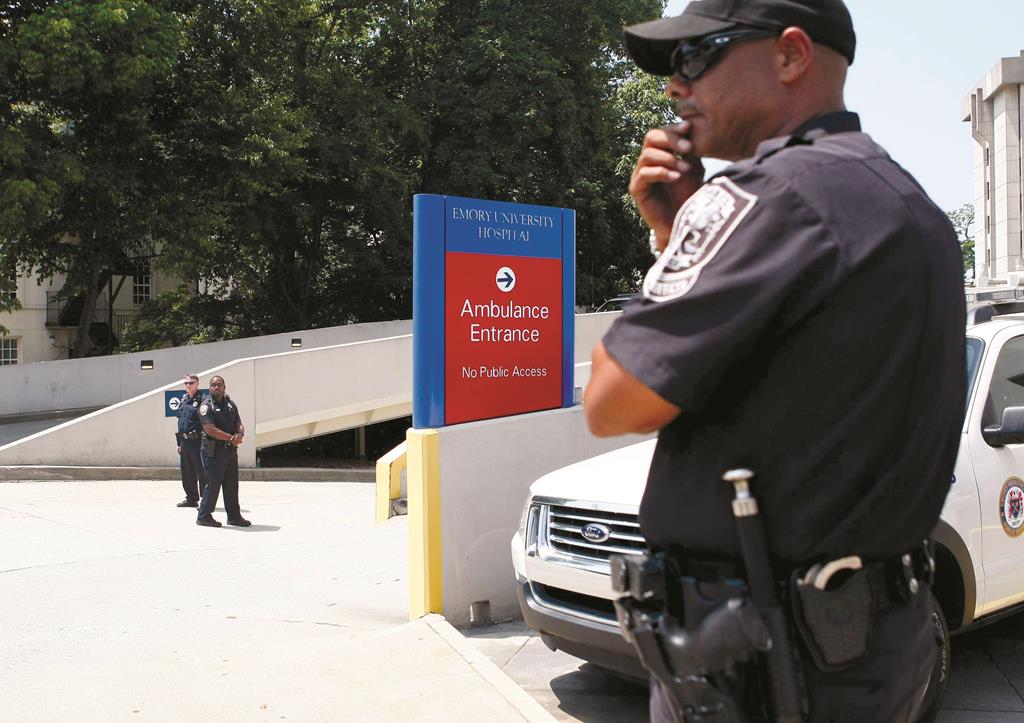Second American Aid Worker With Ebola Arrives in U.S.

A second American aid worker infected with Ebola arrived Tuesday in Atlanta, where doctors will closely monitor the effect of an experimental drug she agreed to take even though its safety was never tested on humans.
Nancy Writebol, 59, arrived from Monrovia, Liberia, in a chartered jet at Dobbins Air Reserve Base and was then taken in an ambulance to Emory University Hospital, just downhill from the U.S. Centers for Disease Control and Prevention.
Writebol is weak but shows signs of improvement, said Bruce Johnson, president of SIM USA, the aid group with which she was working. Johnson said he had spoken with her husband, David Writebol, about her condition.
“A week ago we were thinking about making funeral arrangements for Nancy,” David Writebol said in a statement read by Johnson at a news conference. “Now we have a real reason to be hopeful.”
Though she was wheeled from the ambulance in a stretcher, she is progressing, according to her husband. She was able to stand up and, with assistance, get on the plane in Liberia.
Three days earlier, the other American aid worker diagnosed with the virus arrived at Emory. Dr. Kent Brantly, 33, walked from an ambulance.
The two patients — being treated in an isolation unit — were infected despite taking precautions as they treated Ebola patients in West Africa, where the virus has been spreading faster than governments can contain it, killing nearly 900 people so far.
The treatment, called ZMapp, was developed with U.S. military funding by a San Diego company, using antibodies harvested from lab animals that had been injected with parts of the Ebola virus. Tobacco plants in Kentucky are being used to make the treatment.
It’s impossible to know whether the drug saved these workers, CDC Director Tom Frieden emphasized. “Every medicine has risks and benefits,” he said to reporters at a health symposium in Kentucky. “Until we do a study, we don’t know if it helps, if it hurts, or if it doesn’t make any difference.”
If the treatment works, it could create pressure to speed through testing and production to help contain the disease in Africa. Dozens of African heads of state were meeting with President Barack Obama Tuesday at a summit in Washington. But it could take years before any treatment can be proven to be effective and safe, let alone mass produced.
The CDC has been criticized for not objecting to the arrival of Ebola victims on U.S. soil, but Frieden has emphasized that there is no threat of an outbreak spreading in the United States.
This article appeared in print on page 3 of edition of Hamodia.
To Read The Full Story
Are you already a subscriber?
Click "Sign In" to log in!

Become a Web Subscriber
Click “Subscribe” below to begin the process of becoming a new subscriber.

Become a Print + Web Subscriber
Click “Subscribe” below to begin the process of becoming a new subscriber.

Renew Print + Web Subscription
Click “Renew Subscription” below to begin the process of renewing your subscription.












